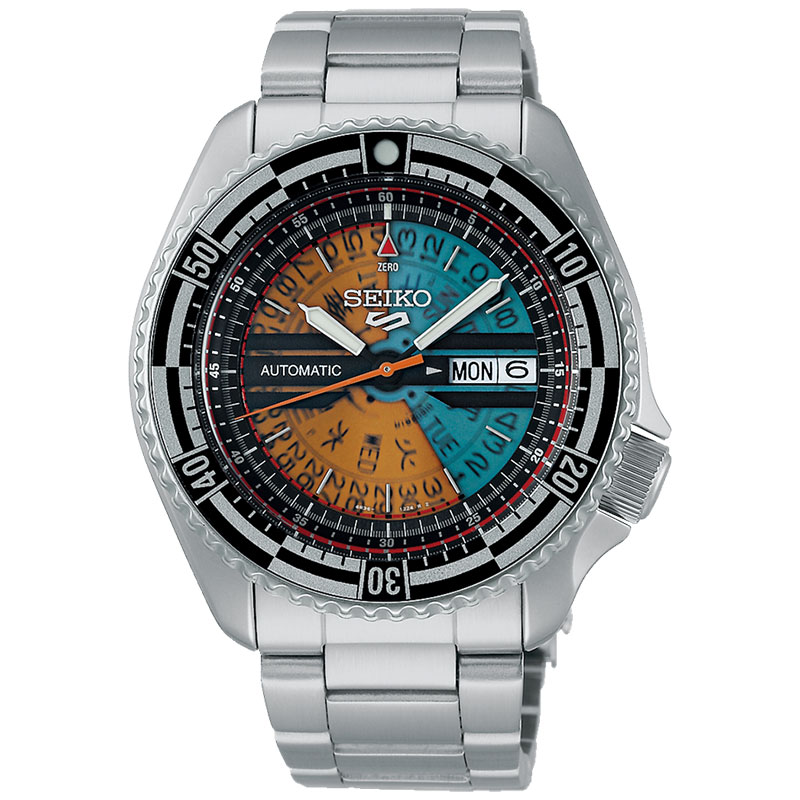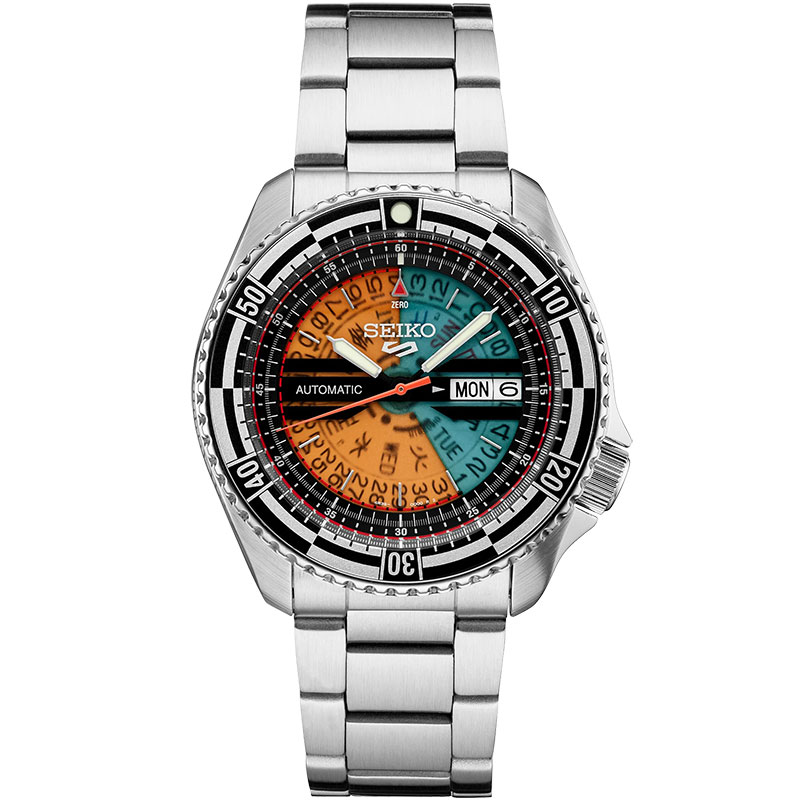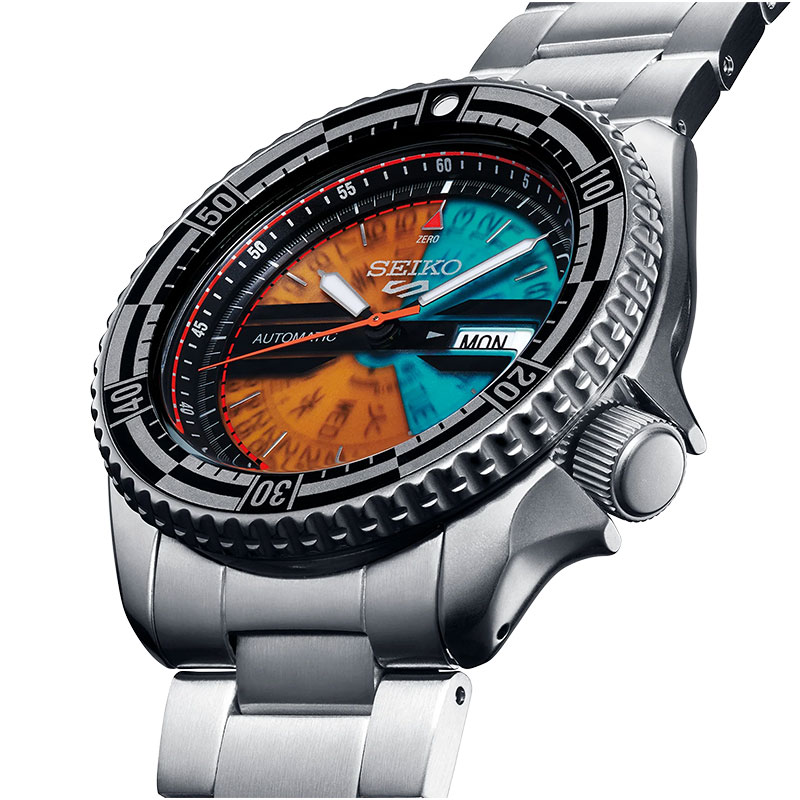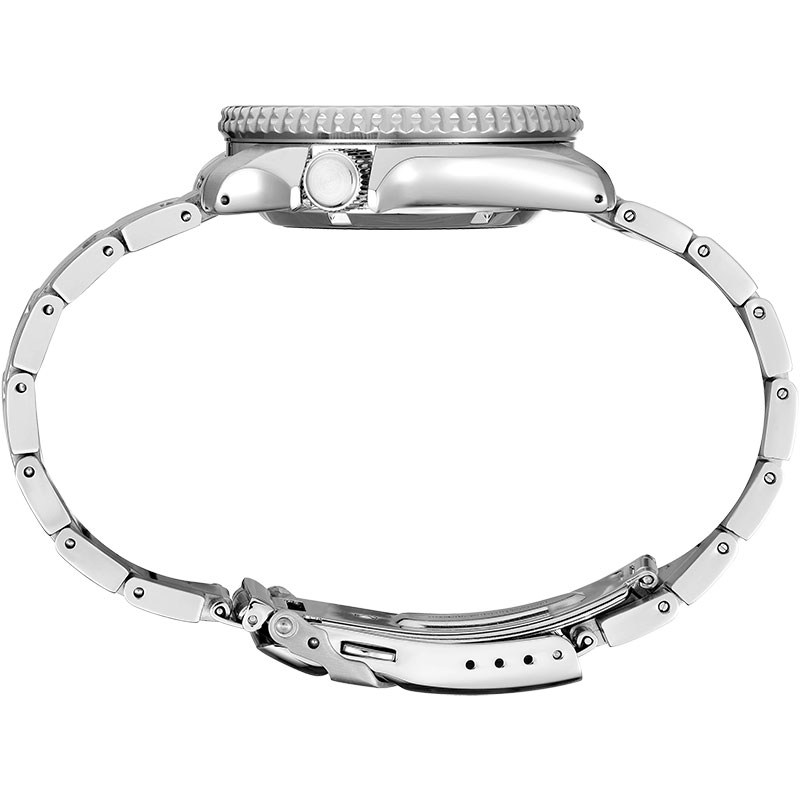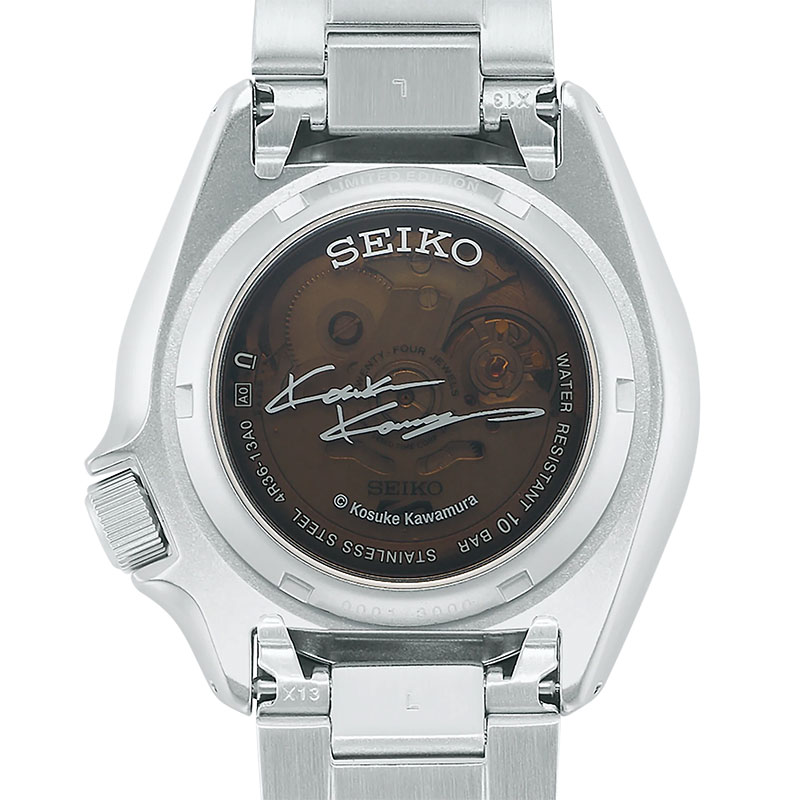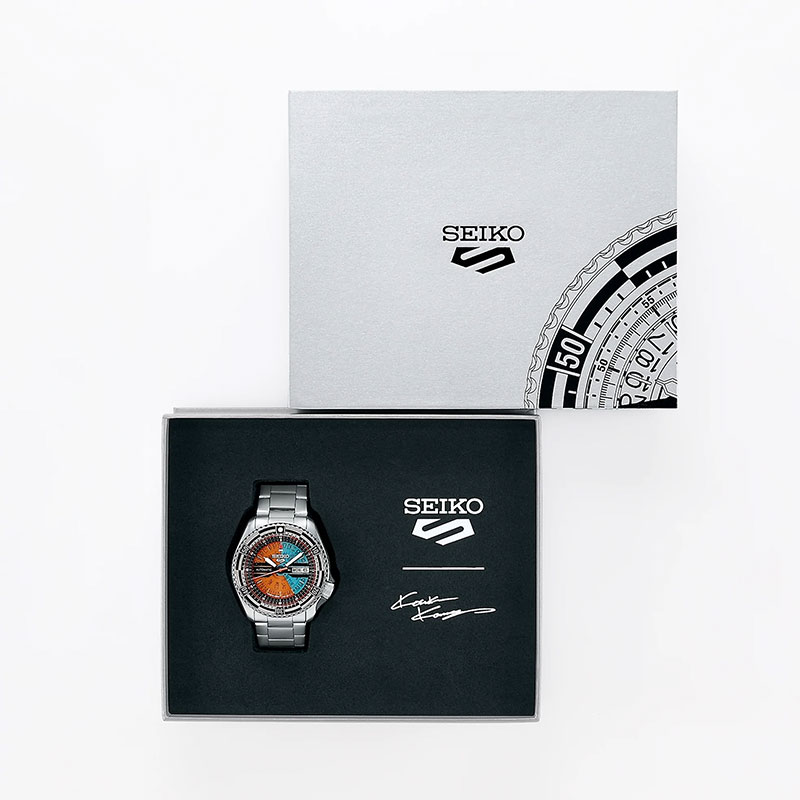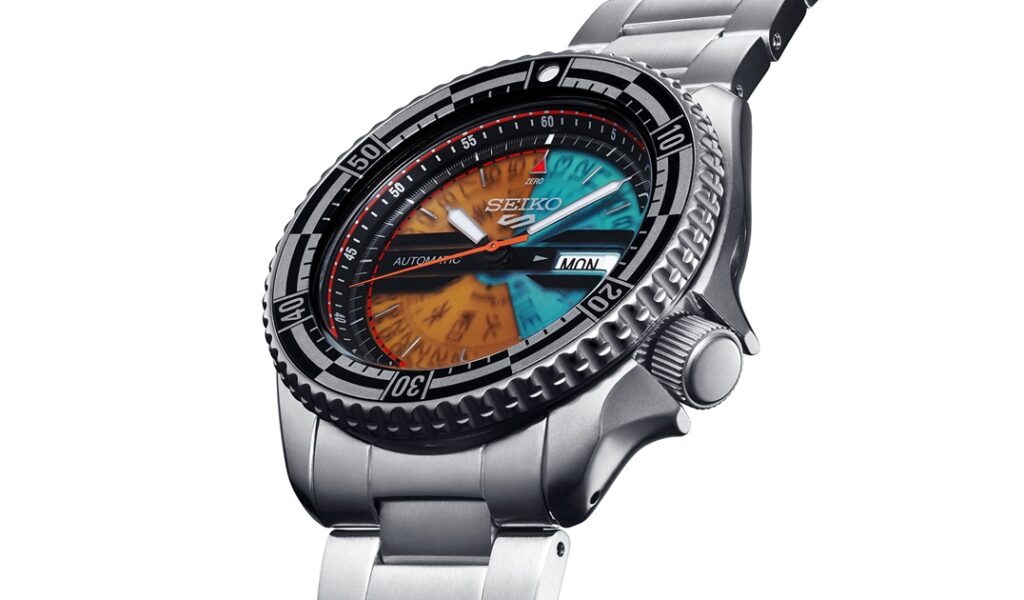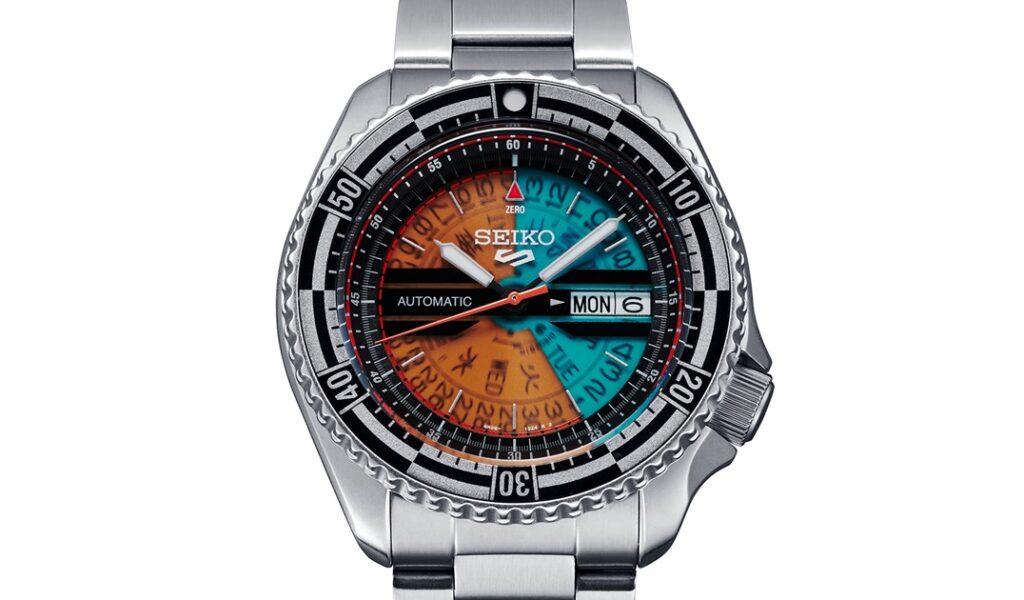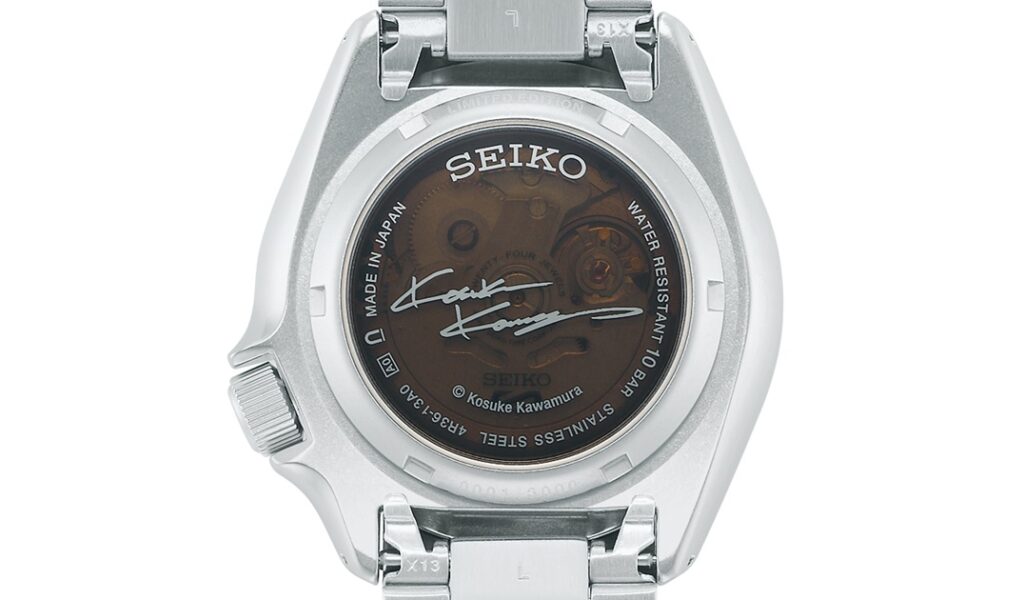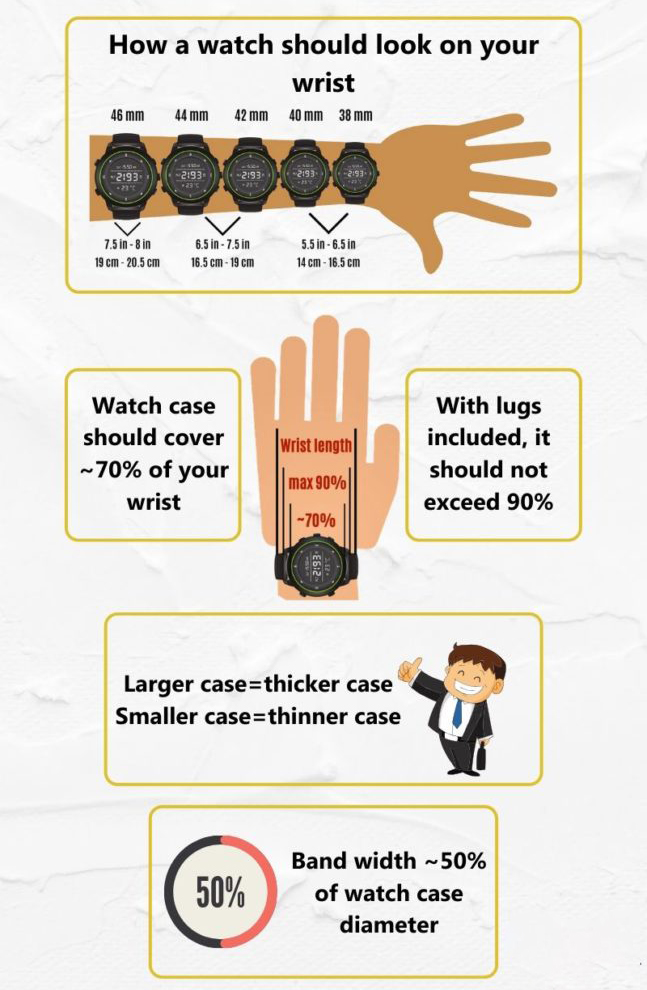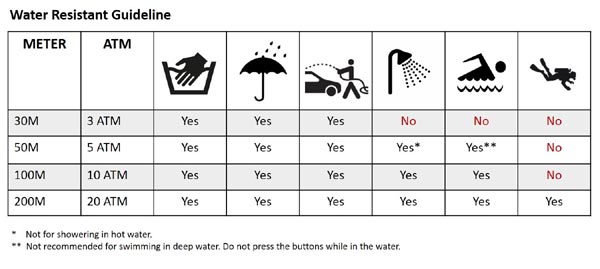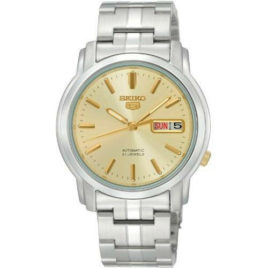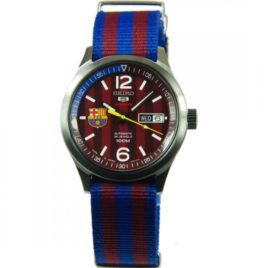Description
SEIKO 5 Sports SRPJ41 Specifications
| Features |
| |||
|---|---|---|---|---|
| Driving system | Automatic with manual winding | |||
| Caliber number | 4R36 | |||
| Case material | Stainless steel with black hard coating | |||
| Case back | See-through screw | |||
| Case color | Silver tone | |||
| Band type | Bracelet | |||
| Band material | Stainless steel | |||
| Band color | Silver tone | |||
| Band width | 22 mm | |||
| Clasp | Three-fold clasp with push button release | |||
| Dial color | Transparent orange and teal, partially tinted dial revealing the day-date wheel, inspired by 1970’s Seiko Time Sonar | |||
| Glass material | Hardlex | |||
| Hands | Luminous silver tone (hour, minute) with orange second hand | |||
| Dial markers | Silver tone batons indexes | |||
| Second markers | Minutes markers around the outer rim with arabic numerals per 5 minutes scale | |||
| Lumi Brite | Hands, indexes and bezel | |||
| Bezel | Unidirectional rotating silver tone with black arabic numerals per 10 minutes scale | |||
| Crown | Push-pull out at 4 o’clock position | |||
| Calendar | Day and date display at the 3 o’clock position | |||
| Function | Date, hour, minute, second, stop seconds hand | |||
| Drive duration | Power reserve approximately 41 hours | |||
| Magnetic resistance | 4,800 A/m | |||
| Water resistance | 10 bar water resistance (100 meters / 330 feet) | |||
| Vibrations | 21,600 vibrations per hour (6 beats per second) | |||
| Size | Diameter : 42.5 mm x Thickness : 13.4 mm | |||
| Lug to lug | 46 mm | |||
| Weight | 167 g |
SEIKO 5 Sports SRPJ41 Features
Seiko 5 Sports KOSUKE KAWAMURA Limited Editions
The Seiko 5 Sports collaboration watch with internationally renowned collage artist KOSUKE KAWAMURA is here!
Kosuke Kawamura
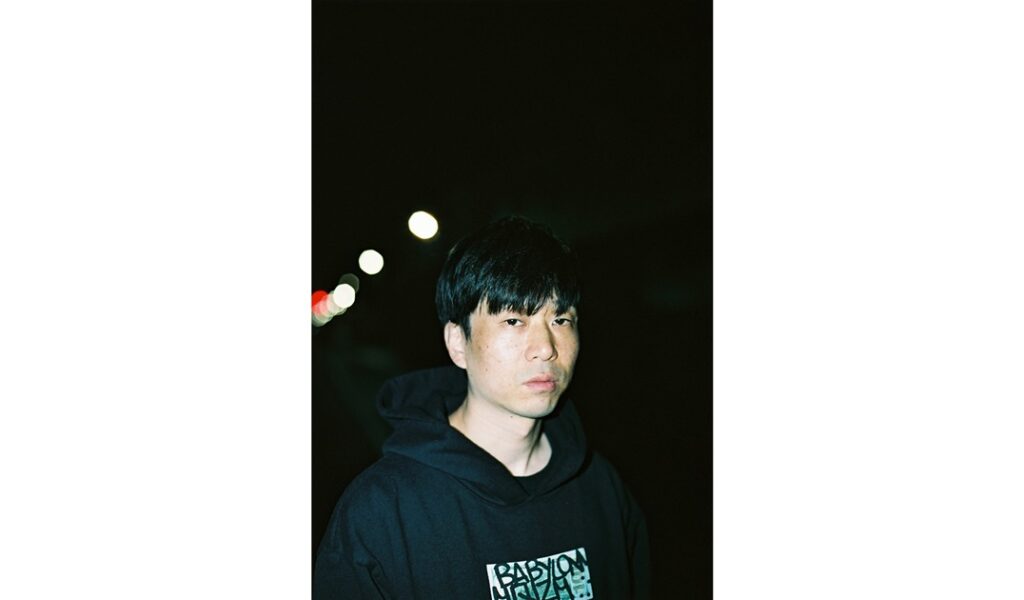
The Hiroshima-born creative started off as a graphic designer and began exhibiting his artworks by the early 2000s across Japan and the globe which led to collaborations with the likes of adidas, G- shock, Uniqlo, Gundam, Evangelion, AKIRA and more as his recognizable collage- based style started attracting a larger audience. He first started off with digital collages utilizing Photoshop and Illustrator but moved towards the traditional method of shredding magazines which he would casually find anywhere and specifically avoids the inclusion of famous photos, acclaimed sources or media that provides little to no artistic value. His initial works are heavily inspired by the anarchic American artist Winston Smith.
Designs from Seiko’s vintage watches are reconstructed into a collage.
Collage artist Kosuke Kawamura extracts characteristic designs and elements from Seiko models from the 1960s and 1970s and reconstructed them into this specially designed limited edition model.
The dial and hands extract elements and colors from the popular 1970s Seiko “Time Sonar” model, which used translucent plastic material.
The bezel display, indexes, scale design, and layout also extract elements from the popular Seiko 5 Sports vintage models.
By incorporating various elements into a single watch, a novel and artistic design is achieved.
The watch is offered as a limited edition with a KOSUKE KAWAMURA signature on the case back alongside the words “LIMITED EDITION” and the serial number.
* In an actual product, the case back direction might be different from the image.
Model SRPJ41 will be available in a limited edition of 3,000 pieces worldwide.
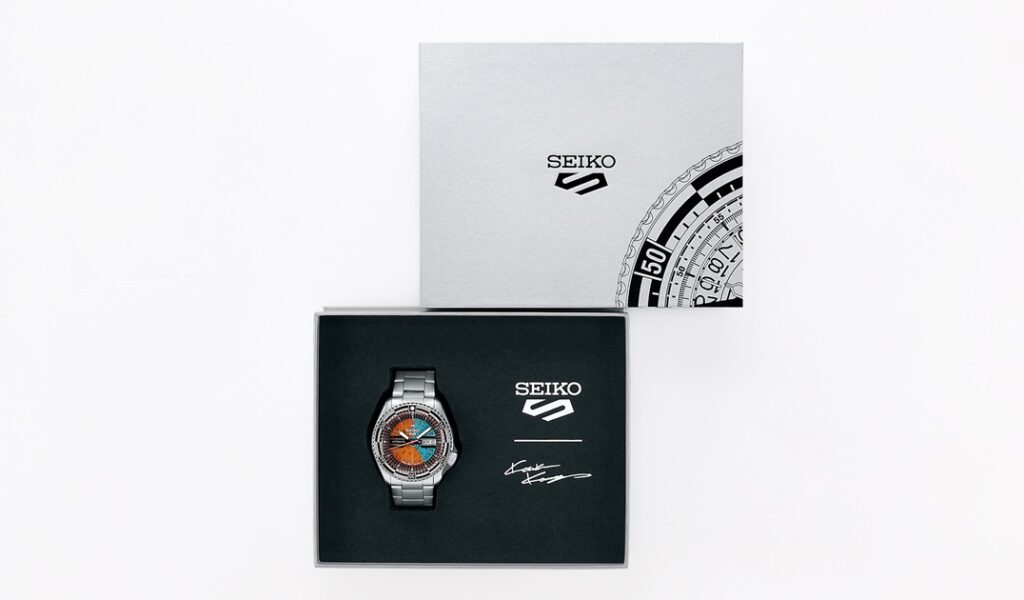 | 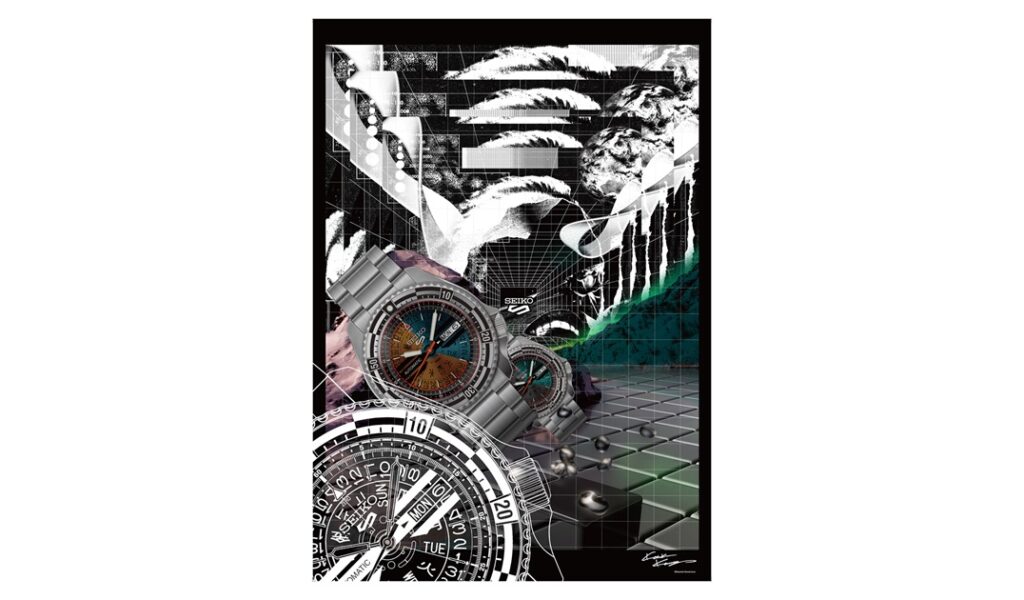 |
A special box unique to this collaboration model is offered with the special package that includes an original poster.
* In an actual product, the specification might be different from the photograph.
- Calendar day and date display
- LIMITED EDITION on the case back
- Serial number engraved on the case back
- See-through and screw case back
- Unidirectional rotating bezel
- 24 jewels
- Stop seconds hand function
About Seiko 5
Seiko 5. Bold designs that speak volumes about those who dare to wear the Seiko 5. The inspiration lies in the edgy designs and dramatic colours, that come together with an innovative automatic movement that defines the very spirit of a Seiko 5.
From the very start, Seiko 5 was a watch whose performance would serve the demanding needs of the new 1960’s generation, who cared less for tradition and more about life. The watch had five key attributes :
1. Automatic winding
2. Day/date displayed in a single window
3. Water resistance
4. Recessed crown at the 4 o’clock position
5. Durable case and bracelet
The technology behind the legend
From the start, Seiko 5 was designed to break the mold of watch performance and to bring to the young 1960’s generation a watch that belonged to their age and that fitted into their lives. As perhaps never before, young people of the day saw no limits to their aspirations. Seiko 5 needed to be a watch that could go anywhere and everywhere. The first challenge was durability. To be durable, a watch needs to be impervious to two threats; water and shock.
Water resistance was built in as standard to every Seiko 5 watch, and metal bracelets were used so that, from buckle to buckle, the watch was resistant to water and sweat. Shock resistance was assured with two Seiko inventions. First, the mainspring was made from “Diaflex,” an unbreakable alloy, and the “Diashock,” system was created to protect the movement from shock within the case.
Legibility was the next vital attribute. Today, we take for granted that day and date are presented in a single window but, in fact, this was an idea built in to Seiko 5 to enhance the legibility of the dial. The genius create a unique system that allowed both day and date to be shown in one plane.
The final challenge was to create a distinctive look that defined the brand. Thanks to the extraordinary Seiko invention of the ‘Magic Lever,’ the winding efficiency of Seiko 5 is very high, and the wearer rarely needs to use the crown. So the designers made it smaller and hid it under the lip of the case at 4 o’clock, giving Seiko 5 its signature look.
History of Seiko 5
Seiko began producing its Seiko 5 line of automatic watches back in 1963. Since then watch enthusiasts around the world have come to recognize Seiko 5 as reliable, affordable and well respected watches. Over the last 50 years Seiko has produced thousands of different models in the line.
History of Seiko
The company was founded in 1881, when Kintarō Hattori opened a watch and jewerly shop called “K. Hattori” (服部時計店 Hattori Tokeiten) in the Ginza area of Tokyo, Japan. Eleven years later, in 1892, he began to produce clocks under the name Seikosha, meaning roughly “House of Exquisite Workmanship”.
The first watches produced under the Seiko brand appeared in 1924. In 1969, Seiko introduced the Astron, the world’s first production quartz watch, it cost the same as a medium-sized car. Seiko later went on to introduce the first quartz chronograph.

